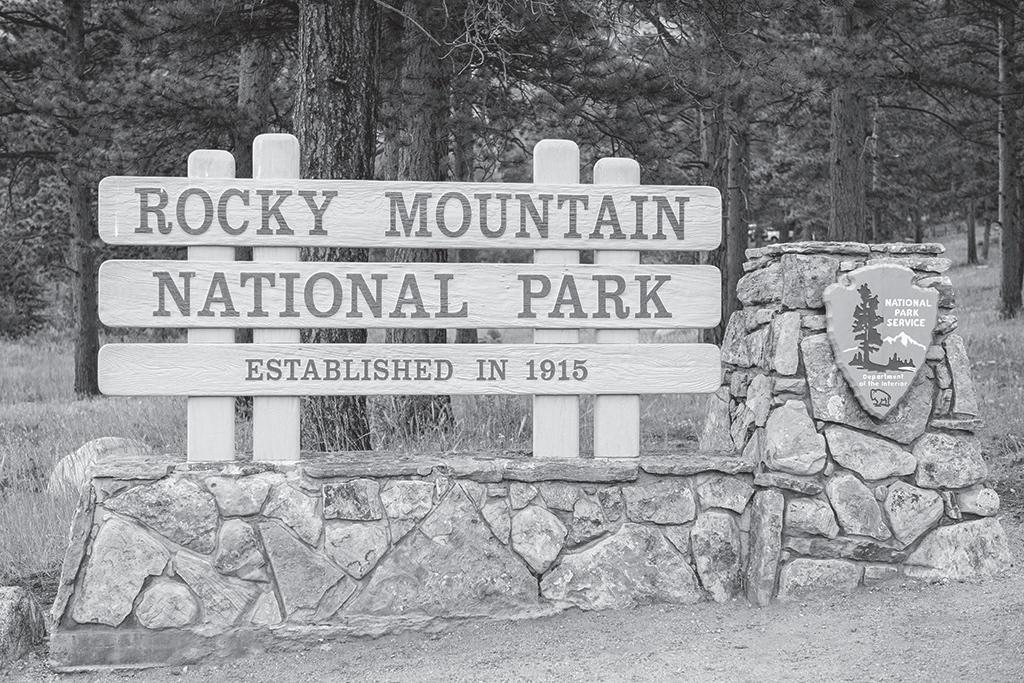
3 minute read
KUMMER
FROM PAGE 12 but only 25 percent of the shift is explained by increased allocations to the Chinese RMB. Much of this was driven by Russia which holds one third of all RMB reserves.
• U.S. sanctions remain on many countries, most notably the freezing of Russian assets after the Ukraine invasion.
• Commodities such as oil are priced and traded in dollars worldwide.


• More foreign currencies are pegged to the U.S. dollar than any other currency including China’s. China is also our largest trading partner with foreign trades pegged to the dollar.
Investment Strategist Brett Lapierre, CFA® states, “I see some weakness in the USD over the next few years as it is fundamentally overval- e NPS says it’s also going completely cashless for payments and fees associated with campgrounds inside of Rocky starting June 1. Overnight visitors must make reservations online ahead of time for most campsites. Timed-entry permits are included with all camping reservations. e cashless switch only applies to entry and permit fees, according to the NPS. ere are two di erent types of timed-entry permits.

If you’re planning to visit multiple national parks this year, you can buy an annual pass that covers admission to all parks in the system for $80. You can buy those online or in-person.
Seniors, veterans and students can also get special passes for free or reduced rates.
What about camping?
Are stores inside the park also going cashless?
Rocky has a small, conveniencelike store and a co ee shop, which will both still accept cash.
How do I get a timed-entry permit?






Rocky is implementing another iteration of its timed-entry program this summer to help manage crowds, which means you’ll need to snag a free permit prior to your visit. A timed-entry permit is required for everyone entering the park between 9 a.m. and 2 p.m. between late May and October.




A regular Park Access permit gets you access to most areas of the park outside of the popular Bear Lake Road Corridor.
A Park Access+ entry permit includes access to Bear Lake Road, as well as other areas of Rocky.

Are other Colorado national parks going cashless?
Yes, Mesa Verde National Park ued. is, combined with stronger economic growth outside of the U.S., higher interest rates and trade de cit, could all put pressure on the USD. A recession could mean the dollar bounces in the short term in a ight to quality trade but over time, I expect the dollar to weaken.” and Florissant Fossil Beds National Monument will go cashless this summer, according to the NPS.
Given these facts, the U.S. dollar is alive and well and remains the stronghold currency worldwide. is could change over time as we see improved economic growth in other countries, and as we incorporate more foreign trade.
In our opinion, it is important to make sure your investment portfolio is diversi ed based on your risk tolerance to include investments that can potentially bene t from these economic conditions.
Patricia Kummer has been a Certied Financial Planner professional and a duciary for over 35 years and is managing director for Mariner Wealth Advisors.

Bent’s Old Fort National Historic Site in southeast Colorado will also go cashless. is story is from CPR News, a nonpro t news source. Used by permission. For more, and to support Colorado Public Radio, visit cpr.org.
BY LUKE ZARZECKI LZARZECKI@COLORADOCOMMUNITYMEDIA.COM
On most Tuesdays and ursdays and some Saturdays, a team of bikers meets to explore Colorado’s network of trails.
e group connects at a co ee shop in downtown Denver. When the weather isn’t too hot, it’s after work around 4 or 5 p.m. In the dead of summer, it’s usually in the morning.
ey sip on espresso and decide where they want to ride that day. It could be on the bike lanes of Denver, the 36 Bikeway to Boulder, the Platte River Trail to Brighton or other suburbs. Most of the time, it involves a stop along the way.
“We would go down the Platte River Trail to the C 470 trail and then Krispy Kremes along there. We call it the Krispy 50. It’s a 50-mile loop,” said Ted Schultz, one of the riders in the group.
e group started after Schultz and two colleagues in his o ce space decided to start riding together after work. Schultz rode with a few others and combined the two groups.
After the ride, they go to a brewery to catch up with one another and relax after the ride.
Colorado’s network of trails
Part of the reason the group exists is due to Colorado’s extensive bike trail infrastructure. Schultz said it’s only improved in the past two decades.
“When you add up the miles of really good trails, it’s just mind-boggling,” he said.

Schultz, who grew up in Colorado, said understanding for cyclists sharing the road and building more infrastructure has vastly grown. In the 70s and 80s, he could almost count on angry driver backlash during his rides. Now, not so much. e Denver Regional Council of Governments built a map that shows all the trails and bike lanes across the region. ey stretch all the way from Boulder to Clear Creek to Castle Rock.
Much of that may be due to more focus on improving trails and streets.
And more may be coming. e Greenhouse Gas Planning Standard, a new rule adopted by the Transportation Commission of Colorado in December 2021, requires agencies to measure greenhouse gas emissions from transit projects, with limits on how high those emissions go.








